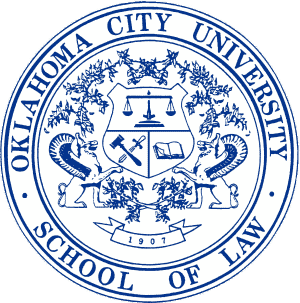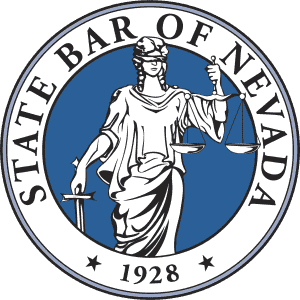Constitutional Requirements Governing American Education
Estimated Reading Time: 20.2minutes
https://www.cato.org/blog/education-constitution
Federal Constitutional Requirements, State Constitutional Issues, Conclusion
The right to a free public education is found in the various state constitutions and not in the federal constitution. Every state has a provision in its constitution, commonly called the “education article,” that guarantees some form of free public education, usually through the twelfth grade. The federal constitution, on the other hand, contains no such guarantee. In San Antonio Independent School District v. Rodriquez, the U.S. Supreme Court in 1973 held that education is not a “fundamental right” under the U.S. Constitution. Thus, as a matter of constitutional law, the founding fathers left it to the states to decide whether to provide an education or not and, if deciding to provide one, determine at what level of quality.
Not only does the federal constitution confer no right to education, it does not even explicitly empower the U.S. Congress to legislate on the subject. Most federal education legislation is therefore enacted under the “spending clause” of the Constitution, which gives Congress the authority to tax and spend for the general welfare. Since federal grants to the states may be conditioned upon the state’s adoption of certain legal and regulatory structures, the federal government has been able to exercise substantial authority over K–12 education policy. For example, in South Dakota v. Dole, the Supreme Court in 1987 upheld a federal law withholding a percentage of federal highway funds from any state that declined to raise its minimum drinking age to twenty-one. This kind of carrot-and-stick approach underlies much federal education law, from the setting of nationwide achievement standards to the education of students with disabilities to Title I and other federal grants relating to education. That other great source of federal regulatory authority, the Constitution’s “commerce clause,” however, has not been used to justify federal legislation in these areas. In United States v. Lopez, the Supreme Court in 1995 held that a law making it a crime to possess a firearm within a certain distance of a school was an impermissible overextension of Congress’s commerce power. Even the justices dissenting in Lopez agreed that the content of education was a classic area of state, not federal, authority.
Nevertheless, once a state decides to provide an education to its children, as every state has, the provision of such education must be consistent with other federally guaranteed constitutional rights, such as the Fourteenth Amendment’s right to equal protection under the law and the First Amendment’s right to the free exercise of, and the nonestablishment of, religion. Therefore, even though the U.S. Constitution does not, in the first instance, require that an education be provided, it nevertheless has had a significant effect on American education.
Any treatment of education and constitutional rights must begin with the Fourteenth Amendment, which guarantees every citizen equal protection under the law. Application of this doctrine has been most profound in the area of school desegregation. In 1954 the U.S. Supreme Court struck down state-sponsored racial segregation of schools in the famous case of Brown v. Board of Education of Topeka, Kansas. This decision and hundreds of later court decisions applying it to individual school districts all over the United States have had major ramifications on virtually every facet of school district operations from the mid-1950s into the twenty-first century. This has been true not only in the South, but throughout the rest of the country, as school districts and courts struggled with how to effectively desegregate the nation’s schools. In the decades since Brown, most school districts have eliminated “vestiges” of state-sponsored segregation, have been declared to be a “unitary” school district (as opposed to a former dual-race system), and have been released from federal court supervision.
Nevertheless, many unitary school districts, now concerned that their schools will become resegregated, are seeking to take steps to preserve racial diversity at their schools. In one of the supreme ironies of American jurisprudence, such efforts may now be illegal under the same Fourteenth Amendment that previously required school districts to employ race-conscious student assignments as a remedial measure but forbids such measures as a means of preserving integrated schools in school districts no longer under court supervision.
Another major constitutional issue facing American education involves public funding of vouchers for private schools. Although several states have enacted limited voucher programs, their legality and continued existence remains in doubt under the First Amendment of the Constitution, which requires the separation of church and state. In June 2002 the Supreme Court ruled that students in the Cleveland, Ohio, area may use state-funded vouchers to pay tuition at private schools, including schools with a religious affiliation. The decision in this case is likely to have a significant impact for decades to come.
As desegregation lawsuits in federal courts wind down, the most important constitutional litigation involving education is increasingly taking place in state courts, as plaintiffs’ groups seek to enforce state constitutional guarantees. Beginning in the early 1970s plaintiffs’ groups began to make constitutional challenges to the heavy use of local property tax revenues in most states to finance public schools. This system of funding public schools often resulted in large disparities in per-pupil expenditures between property-rich and property-poor districts. As a result of a series of these “equity” suits, which were based on state constitutional guarantees of equal protection and uniformity, most states in the years since the early 1980s have reformed their state education funding formulas to provide a greater degree of equity (although not complete equality) in funding between school districts. This has been accomplished in many states by providing more state-level funding to property-poor districts to offset their lower local revenues, and less state funding to property-rich districts.
During the same period, plaintiffs’ groups also began to challenge the adequacy of state education systems, including the sufficiency of funding of public schools, under the “education articles” of state constitutions. These cases are quite different from “equity” cases, which are based on disparities in funding; “adequacy” cases challenge the sufficiency of the funding to provide the level of educational opportunities required by the particular state constitution, regardless of how such funding is allocated among a state’s school districts. It is these state court “adequacy” cases that are likely to be the main source of constitutional litigation in the early twenty-first century.
Federal Constitutional Requirements
Below are discussed the evolution of school desegregation since the landmark 1954 Brown decision and the racial diversity in U.S. schools in the post-desegregation era. This section also reviews the status of school vouchers and their constitutionality under the First Amendment.
School desegregation. There is no question that since the early 1960s school desegregation suits under the Fourteenth Amendment have had a greater impact on American schools than almost any other factor. In its 1954 Brown v. Board of Education decision, the Supreme Court declared state-mandated racial segregation of schools illegal. A year later, in Brown II, the Court ordered that segregated schools be eliminated with “all deliberate speed.” The Court, however, gave little practical guidance as to how school districts and the lower courts were to carry out this major transformation in the social fabric of many regions of the country. As a result, the process of desegregating formerly dual-race school systems lasted for decades and in the early twenty-first century had still not been completed in some school districts.
After Brown, little happened until the mid-1960s as many southern states waged a program of massive resistance to school desegregation. In Stanley v. Darlington School District, the federal court in South Carolina described the different forms of such resistance. In the mid-to late 1960s, token desegregation occurred, but that was due more to the passage of the Civil Rights Act of 1964, which forced school districts to desegregate as a precondition to receiving federal funds, than it was to court enforcement of constitutional guarantees. In 1968 the situation dramatically changed with the Supreme Court decision of Green v. School Board of New Kent County. In Green, the Court required that school districts promptly take steps to effectively desegregate the operations of their schools in the areas of student assignments, faculty and staff assignments, facilities, extracurricular activities, and transportation. Ineffective plans that resulted in only token desegregation were no longer permitted. Green was followed by the Court’s 1971 Swann v. Charlotte-Mecklenburg Board of Education decision, which approved the use of mandatory busing as a desegregation tool. Thus began the real process of desegregating the schools. Mandatory busing, however, was extremely controversial, especially among white parents, and the effect of such desegregation plans was often undermined by what became known as “white flight” (i.e., white parents moving out of the district or placing their children in private schools). Therefore, in the 1980s, the courts began to rely more and more on voluntary desegregation plans that centered on magnet schools and other measures designed to encourage, but not require, students to transfer to racially mixed schools. One of the first such plans was approved by the federal court in 1989 in Stell v. Savannah-Chatham County Board of Education, which involved the school district in Savannah, Georgia.
By the 1990s most school districts had accomplished as much faculty and student desegregation as was practical, given “white flight” and the persistence of de facto segregation in housing patterns. Consequently, the courts began to release more and more school districts from court supervision on the grounds that they had eliminated the vestiges of the former segregated school systems “to the extent practicable.” Nevertheless, although not discussed in Green, some courts also began to examine whether the “achievement gap” between minority and white students in many school districts was also a “vestige” of the former segregated system. Consequently, in deciding whether to dismiss desegregation cases, courts in the 1990s did not focus as much on student or faculty assignments (the main issues from 1954 through the 1980s), but rather on whether poor academic performance of minority pupils is a “vestige” of the former segregated system that must be eliminated before court supervision is terminated. In 1995 in Jenkins v. Missouri, the Supreme Court held that such low performance had to be causally linked to the prior dual school system. Because this is difficult to establish, plaintiffs have had only limited success in convincing courts that low minority performance is sufficiently related to the prior dual school system to serve as a basis for continued court supervision.
Therefore, as the nation entered the new millennium, the constitutional obligation to desegregate, which greatly influenced operations and planning in many school districts for more than forty years, had been satisfied in most districts and was becoming less and less of a factor in those relatively few districts that remained under active federal court supervision.
Diversity. The closing of the desegregation era does not mean, however, that issues of race have disappeared in public education. Many school districts, which successfully desegregated the student populations of their schools and have therefore been declared unitary and released from court supervision, continue the struggle to maintain racial integration or, as it is now more often called, “diversity,” in their schools. Nevertheless, the Fourteenth Amendment, which once required race-based student assignments and admissions as a remedial measure, may now prohibit school districts from continuing to use race-conscious plans once such school districts have completed remedial proceedings and been declared unitary. Once the effects of past discrimination have been remedied, as in the case of a school district declared unitary, it is argued that there is no longer a remedial justification for taking student race into account in making student assignments or deciding upon admissions to special programs, such as magnet schools. For example, if student race is considered in admitting students to a magnet school, a student denied admission because her race did not contribute to racial diversity may claim that she was denied admission based on race and that such a decision is discriminatory and a denial of equal protection. School districts often respond that maintaining racial diversity is a compelling governmental interest, and that some use of race in the decision-making process regarding assignment of students should therefore be permitted. The lower courts are split on the issue, although the majority view tends to prohibit race-based admissions and assignment policies unless they serve a remedial purpose. Until the Supreme Court decides the issue, the lower courts are likely to careful scrutinize and in most regions of the country prohibit any consideration of student race in the student assignment and admissions process.
School vouchers. Many school reform advocates believe that public schools suffer from a lack of competition and that states or school districts should provide vouchers to students, especially poor and minority students attending substandard inner-city schools, to enable them to attend a private school. At least three states (Florida, Wisconsin, and Ohio) have passed legislation funding such vouchers. Until spring 2002 one huge unknown factor in the debate over using public funds to support private, parochial schools was whether such use of public funds violates the First Amendment of the Constitution, which prohibits government from unduly supporting religion or favoring one religion over another. In June 2002 the Supreme Court held in the case Zelman v. Simmons-Harris that the use of public funds to pay for religious school tuition is constitutional. Under this program, the State of Ohio provides vouchers to some 4,000 students from low-income families. The vouchers can be used to pay tuition at participating private schools, including religiously affiliated schools. Although the Supreme Court’s ruling resolved the constitutionality of school vouchers, the policy debates about the vouchers are likely to continue in the years to come.
State Constitutional Issues
As school desegregation issues, which have dominated public education for decades, are finally resolved, lawsuits based on state constitutional requirements have moved to the forefront. These lawsuits have become known as either “equity” or “adequacy” cases.
Equity cases. These cases began with the unsuccessful efforts of plaintiffs in San Antonio Independent School District v. Rodriquez, a case brought in the early 1970s in federal court to challenge the method of funding public education in Texas. At the time, Texas, like most states, financed its schools primarily through local property taxes. Because property values differed greatly between districts, this method of funding resulted in significant spending disparities between school districts, with the wealthier districts in Texas spending more than two to three times as much as the poorest districts on a per-pupil basis. In rejecting plaintiffs’ equal protection claim under the Fourteenth Amendment, the Supreme Court held that education was not a fundamental right under the Constitution. It therefore held that disparities in the provision of education services and facilities did not have to be justified by a showing that they served a compelling governmental interest, but could be justified merely by showing that a rational basis existed for such a taxing mechanism. Because the local property tax system had a rational basis, in the view of the Court, it was not unconstitutional.
Notwithstanding this initial defeat in the federal courts, proponents of equity among school districts in education funding continued their fight in the state courts, and they won victories in the mid-1970s in California (Serrano v. Priest) and New Jersey (Robinson v. Cahill). In these decisions, the courts struck down property tax–based systems based on state constitutional provisions requiring equal protection and uniformity, and they ordered the use of more equitable funding systems in which the resources provided for a child’s education did not depend nearly as much on the property wealth in the community in which a child lived and attended school. Since then, “equity cases,” as they are often called, have been brought in almost every state, and plaintiffs have been successful in many of them. While local property taxes remain a major source of school revenues, states have modified their education financing formulas to provide more state aid to property-poor districts to offset lower local property tax revenues in such districts and to provide less state aid to property-rich districts. While complete equality in funding has rarely, if ever, been realized, and is not required under most state court decisions, large disparities in funding between school districts have been greatly reduced in many states.
Adequacy cases. Equity cases, while successful in reducing funding disparities between school districts in many states, have fallen short of being the panacea that many school finance reformers believed they would be, for several reasons. First, attaining equity does not necessarily mean increases in education spending. Indeed, while the result of Serrano v. Priest was to insure equity in spending among California’s school districts, it has at the same time moved California from one of the highest spending states on education to one of the lowest. Moreover, the equity cases did not, in the minds of many plaintiffs’ groups, address the claims of many urban school systems. Such school districts and their supporters contend that they need additional funding to address the educational needs of the large numbers of their students who are at risk of academic failure because of the effects of poverty and other socioeconomic problems. Simply obtaining funding equal to other school districts is not sufficient, it is argued, given the extraordinary needs of such districts.
Since the 1970s plaintiffs have brought “adequacy” suits in more than twenty states, alleging that the state has failed to provide an “adequate” education, a right guaranteed by many state constitutions. Generally, such suits allege that educational “inputs,” such as facilities, curriculum, textbooks and other instructional materials and equipment, and number and quality of teachers, are insufficient to enable schools and school districts to provide an “adequate” education for their students. Plaintiffs also rely on substandard “outcomes,” as evidenced by low scores on standardized tests, low graduation rates, and high dropout rates as proof that the state has failed to provide an adequate education for substantial numbers of its children.
Such suits are normally based on the “education article” contained in most state constitutions that requires the state legislature to provide for some type of a “system” of free public schools. Generally, the education articles are couched in fairly vague terms, such as requiring “a thorough and efficient system of education” or a “system of free common schools.” Although the constitutional language rarely gets any more specific than the foregoing examples, the highest courts of many states have interpreted such language to require an “adequate” or “sound, basic” education.
In several states, adequacy suits have been dismissed on the grounds that they involve political questions reserved by the state constitution to the legislature, and therefore that they violate the separation of powers doctrine. In essence, because the terms used both by the courts (e.g., “adequate”) and the constitution (e.g., “thorough,” “efficient”) are ambiguous and capable of many meanings, these courts have held that if the courts decided such cases, they would in effect be substituting themselves for the legislature in determining important policy questions normally reserved by the state constitution to the legislative branch (e.g., what level of education to provide and how much of the state’s resources to devote to education).
Notwithstanding pretrial dismissals in several states, plaintiffs have enjoyed success in increasing numbers of states, including most notably New Jersey, Ohio, Kentucky, and Wyoming. The highest courts of these states have struck down the state system for financing public schools and required the legislatures to appropriate significantly increased spending for public education. Other important cases, such as those in Arkansas, New York, and North Carolina, have been decided at the trial court level in plaintiffs’ favor, but they have not yet been reviewed by the state’s highest court. In still other states, such as Florida, cases have been filed but not yet decided.
In states where plaintiffs have been successful, often after many years or decades of litigation, such lawsuits have led to higher spending for education, including expenditures for school facilities, teacher’s salaries, special programs, and technology. Whether these lawsuits have resulted or will result in improved student achievement, however, is another oft-debated question that is beyond the scope of this entry.
Conclusion
Both federal and state constitutional requirements have heavily influenced the organization, funding, and operation of America’s schools in the past and are likely to continue to do so in the future.
See also: SUPREME COURT OF THE UNITED STATES AND EDUCATION.
BIBLIOGRAPHY
Abbott v. Burke, 710 A.2d 450 (N.J. 1998).
ARMOR, DAVID J. 1995. Forced Justice: School Desegregation and the Law. New York: Oxford University Press.
Brown v. Board of Education of Topeka, Kansas, 347 U.S. 483 (1954).
Brown v. Board of Education of Topeka, Kansas, 349 U.S. 753, 757 (1955) (Brown II).
Campbell County Sch. Dist. v. State, 907 P.2d 1238 (Wyo. 1995).
Civil Rights Act of 1964. U.S. Code. Vol. 42, sec. 2000d.
DAYTON, JOHN. 2001. “Serrano and its Progeny: An Analysis of 30 Years of School Funding Litigation.” 157 West’s Educational Law Reporter 447.
Green v. School Board of New Kent County, 391 U.S. 430 (1968).
Jenkins v. Missouri, 515 U.S. 70 (1995).
Robinson v. Cahill, 303 A. 2d 273 (N.J. 1973).
Rose v. Council for Better Educ., 790 S.W.2d 186 (Ky. 1989).
San Antonio Independent School District v. Rodriguez, 411 U.S. 1 (1973).
Serrano v. Priest, 557 P. 2d 929 (Cal. 1976).
Stell v. Savannah-Chatham County Board of Education, 888 F. 2d 82 (11th Cir. 1989).
Swann v. Charlotte-Mecklenburg Board of Education, 402 U.S. 1 (1971).
Tuttle v. Arlington County Sch. Bd., 195 F.3d 698 (4th Cir. 1999).
United States v. Lopez, 514 U.S. 549 (1995).
ALFRED A. LINDSETH
Additional topics
Education Encyclopedia – StateUniversity.comEducation Encyclopedia: Education Reform – OVERVIEW to Correspondence course
Top of Form
Bottom of Form
COPYRIGHT © 2020 WEB SOLUTIONS LLC. AND ITS LICENSORS ALL RIGHTS RESERVED
TERMS OF USE
SHARE THIS ARTICLE
Read more: Constitutional Requirements Governing American Education – Federal Constitutional Requirements, State Constitutional Issues, Conclusion – School, Districts, Schools, and Court – StateUniversity.com https://education.stateuniversity.com/pages/1882/Constitutional-Requirements-Governing-American-Education.html#ixzz6URfAq8Ik
At TheOneLawyer.com, we are here to serve our community and provide legal services in the Henderson and Las Vegas area. We are a boutique law firm providing experienced and personal representation to injured clients. At the Law Offices of Laura Payne-Hunt, TheOneLawyer.com we provide professional and personal service to each and every one of our clients on various legal matters and have over 15 years of experience in reviewing insurance policies and in Nevada insurance law. If you have a question regarding any type of personal injury or paying your medical bills from an accident, please don’t hesitate to call the offices of TheOneLawyer.com and speak directly to attorney Laura Marie Payne-Hunt, Esq. a Henderson Injury Attorney for over 15 years. Laura is recognized as one of Nevada’s Top 100 Lawyers. She has the experience and knowledge to obtain the maximum settlement you deserve. Please call our office if you or a loved one is injured. We can make sure that you receive the care you need and deserve and advise on how to preserve evidence.
At our office, we are experienced in helping injured victims get the compensation they are entitled to. Insurance companies never have the best interest of the injured person at the top of their priorities. They want to pay as little on every claim as possible. Having worked for an insurance company as an attorney for 9 years before opening my boutique law firm specializing in helping injured people, I have reviewed thousands of auto accident claims and policy provisions.
At the Henderson and Las Vegas Accident injury law offices of TheOneLaweyer.com, Laura Marie Payne-Hunt and her staff are here to help you and your family in the event that accidents and tragedies occur. For any of your legal needs, do not hesitate to contact our Henderson and Las Vegas Accident injury offices. TheOneLawyer.com is a boutique, family owned law firm that specializes in helping injured people and the community of Las Vegas and Henderson Nevada with legal issues involving auto accidents, wrongful deaths, slip and falls, truck accidents, injuries to children, bicycle accidents, dog bites, product liability claims, and all types of injury claims. Please do not hesitate to call us anytime you have a legal question or you or a loved one has sustained an injury at 702-450-(HUNT) 4868 and text 24/7 at 702-600-0032.










